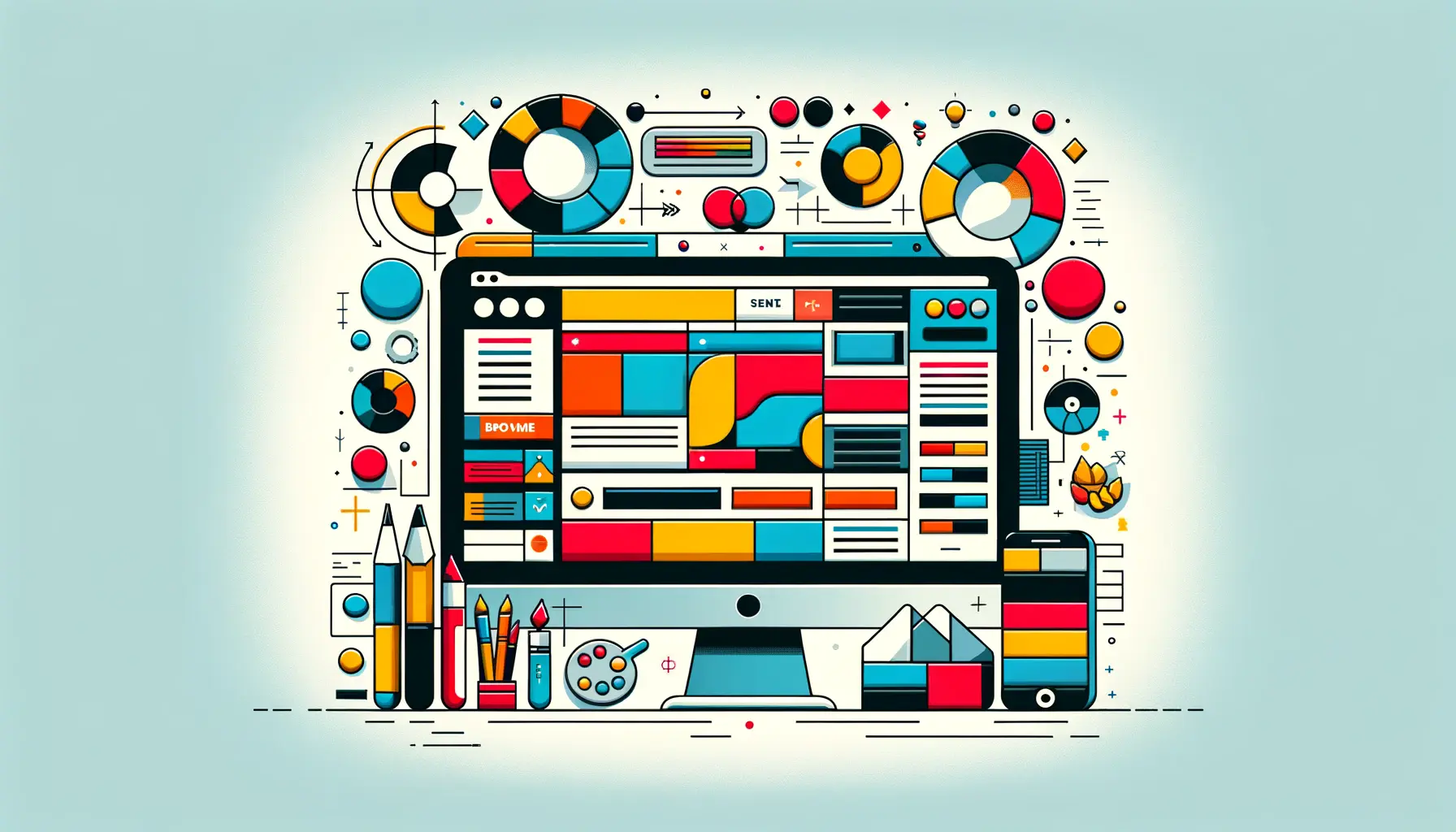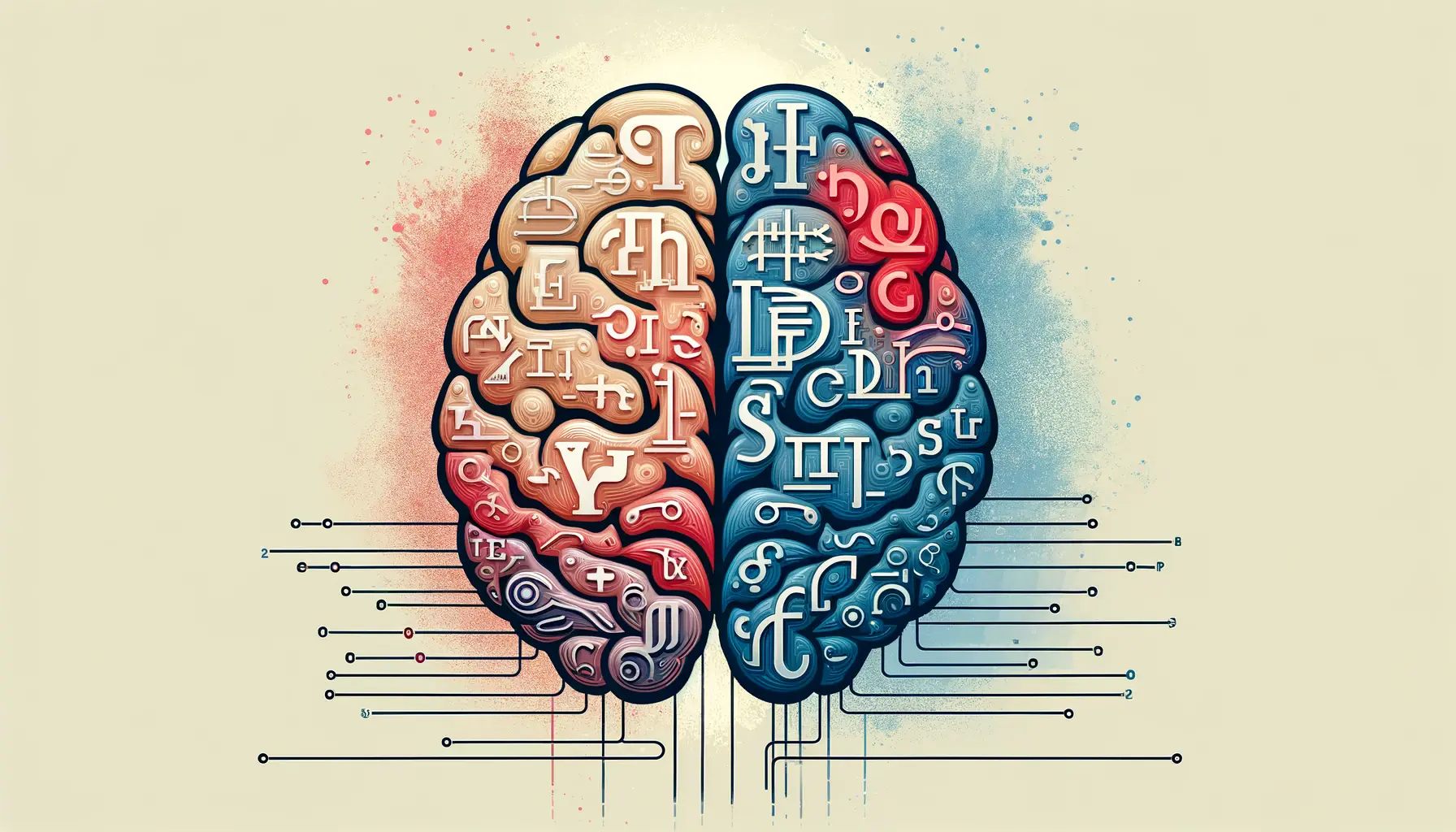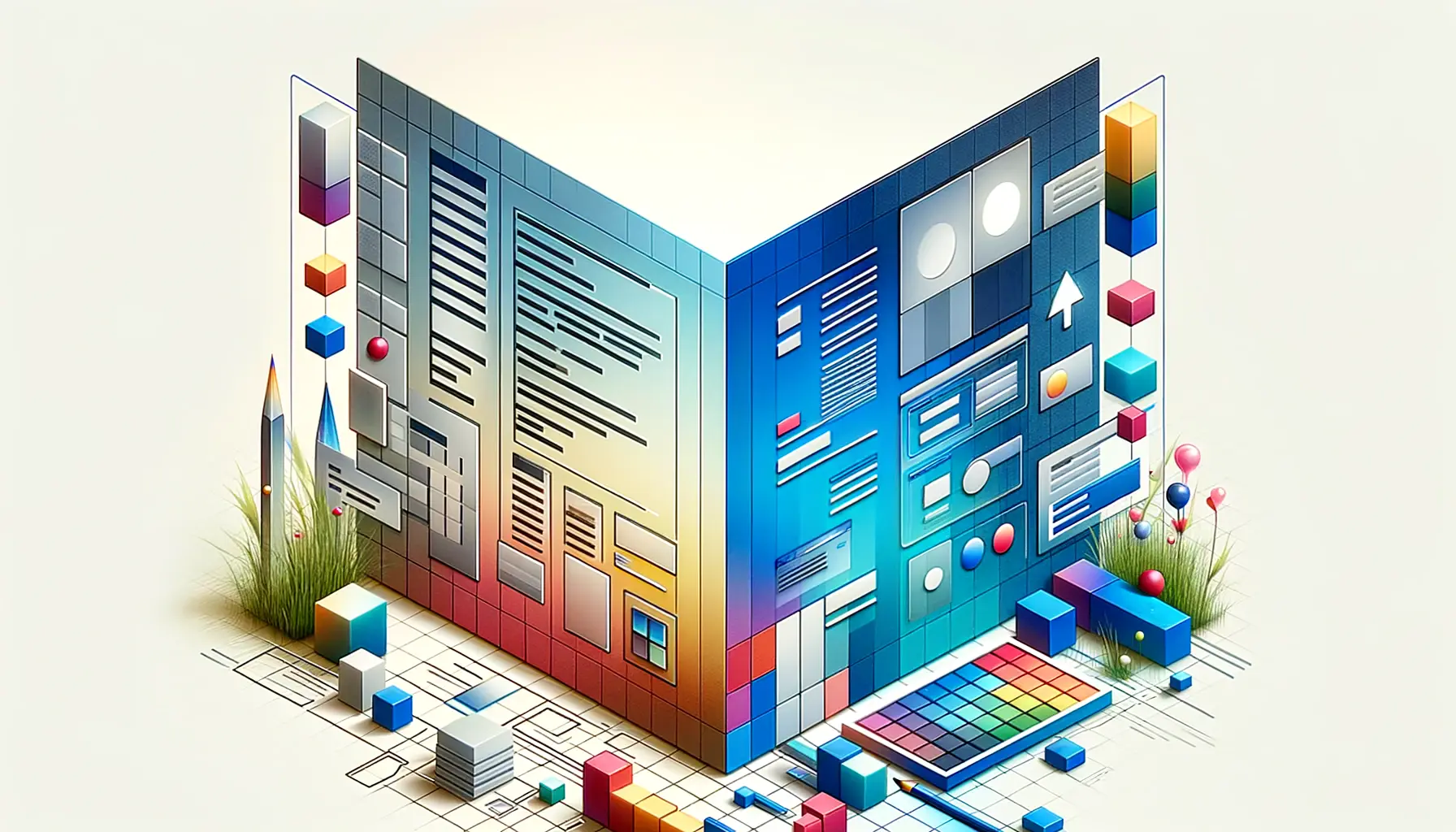The digital landscape is continuously evolving, with HTML and web design at its core.
As we navigate through the latest advancements and creative trends, it’s clear that the future of web design is not just about how websites look but how they function and engage users.
The importance of staying abreast of the latest trends cannot be overstated for designers, developers, and businesses alike, aiming to create compelling, user-friendly, and innovative online experiences.
In this exploration of HTML and web design trends, we delve into the elements that are shaping the future of online interactions.
From the integration of advanced technologies to the adoption of more inclusive and accessible design practices, the web is becoming a more dynamic, interactive, and personalized space.
Let’s embark on this journey to uncover the trends that are not only captivating users but also setting new standards for digital excellence.
- Emerging Technologies in Web Design
- Accessibility and Inclusion in Web Design
- Minimalism and Simplicity in Design
- Interactive Elements and Microinteractions
- Visual Storytelling and Content Strategy
- Color Psychology and Web Design
- SEO and Web Design Integration
- Forging the Future of Online Spaces
- HTML and Web Design Trends FAQs
Emerging Technologies in Web Design
Artificial Intelligence and Machine Learning
The integration of Artificial Intelligence (AI) and Machine Learning (ML) into web design is revolutionizing the way websites understand and interact with users.
AI-driven chatbots, personalized content delivery, and automated design elements are becoming commonplace, offering users a more tailored and interactive experience.
These technologies allow websites to learn from user interactions, improving their functionality and usability over time.
Machine Learning algorithms are particularly impactful in analyzing user behavior, enabling websites to adapt and present content that is most relevant to the individual’s preferences and browsing habits.
This level of personalization not only enhances user engagement but also significantly boosts the effectiveness of web pages as marketing tools.
Progressive Web Apps (PWAs)
Progressive Web Apps represent a blend of the best features of web and mobile apps, offering users a seamless and efficient online experience.
PWAs are designed to work on any platform that uses a standards-compliant browser, including both desktop and mobile devices.
The key advantages of PWAs include offline functionality, fast loading times, and the ability to receive push notifications.
As more users demand mobile-friendly content, PWAs are becoming an essential component of modern web design.
They provide the convenience and speed of a mobile app with the reach and accessibility of a web page, making them a powerful tool for businesses looking to improve their online presence.
Embracing emerging technologies like AI, ML, and PWAs is crucial for creating dynamic, user-centric web designs that stand out in today’s digital landscape.
Accessibility and Inclusion in Web Design
The push towards creating more accessible and inclusive web environments has gained significant momentum.
As the internet becomes increasingly integral to daily life, ensuring that websites can be navigated and enjoyed by everyone, regardless of their physical or cognitive abilities, has become a priority.
This shift towards inclusivity not only reflects a broader social commitment to accessibility but also opens up websites to a wider audience.
Key strategies for enhancing web accessibility include:
- Implementing semantic HTML to provide meaningful structure to web content, making it easier for assistive technologies to interpret.
- Ensuring high contrast ratios and flexible font sizes to accommodate users with visual impairments.
- Creating keyboard-navigable interfaces for those unable to use a mouse or touchscreen.
- Providing alternative text for images and ARIA (Accessible Rich Internet Applications) labels for interactive elements to improve screen reader compatibility.
Responsive and Adaptive Design
With the proliferation of devices with varying screen sizes and resolutions, responsive and adaptive design have become indispensable in web design.
These approaches ensure that websites provide an optimal viewing experience across all devices, from desktops to smartphones.
Responsive design uses fluid grids and flexible images to create a single, dynamic site that adjusts to fit the screen it’s viewed on.
Adaptive design, on the other hand, involves creating multiple versions of a website to fit different screen sizes.
Both methods aim to enhance usability and ensure that content is easily accessible on any device.
Incorporating accessibility and responsive design practices not only improves user experience but also boosts SEO rankings, as search engines favor websites that cater to a broad audience.
Minimalism and Simplicity in Design
The trend towards minimalism and simplicity in web design continues to dominate, driven by the desire for faster loading times and a cleaner aesthetic that enhances user experience.
This design philosophy focuses on stripping away superfluous elements and content, leaving only what is necessary.
The result is a site that is not only visually appealing but also highly functional and easy to navigate.
Characteristics of minimalist web design include:
- Use of ample white space to create a feeling of openness and focus attention on key elements.
- Limited color palettes to avoid visual clutter and enhance brand recognition.
- Streamlined navigation menus to simplify user journeys and improve accessibility.
- Minimal use of text and images to communicate messages more effectively and ensure quick load times.
Typography as a Design Element
In minimalist web design, typography takes on an essential role, often becoming one of the main design elements.
The choice of font and text layout is crucial, as it must capture the user’s attention and convey the desired message without the support of elaborate graphics or images.
Designers are experimenting with bold, creative typography to add personality and visual interest to their minimalist designs.
Effective use of typography in minimalist design involves:
- Selecting fonts that reflect the brand’s personality while ensuring readability across devices.
- Employing varying font weights and sizes to create hierarchy and guide the user’s eye.
- Integrating text with negative space to draw focus and create impactful visual statements.
Embracing minimalism and simplicity in web design not only improves the aesthetic appeal and usability of a website but also aligns with current user preferences for clean, fast-loading, and easy-to-navigate online experiences.
Interactive Elements and Microinteractions
The inclusion of interactive elements and microinteractions has become a hallmark of modern web design, offering a more engaging and personalized user experience.
These small, functional animations and effects can significantly enhance usability and aesthetic appeal, encouraging users to interact more deeply with the content.
Examples of interactive elements and microinteractions include:
- Hover effects that reveal additional information or change the appearance of buttons and links.
- Animated loading bars that visually entertain users while they wait for content to load.
- Feedback animations that confirm a user’s action, such as a “like” button that changes color when clicked.
- Scroll animations that bring content to life as the user moves down the page.
Enhancing User Engagement Through Interactivity
Interactive elements and microinteractions play a crucial role in enhancing user engagement by making web pages more dynamic and responsive to user actions.
They provide immediate feedback, making the user’s journey through a website more intuitive and satisfying.
By integrating these elements thoughtfully, designers can create memorable experiences that encourage users to stay longer and explore more deeply.
Strategies for effectively incorporating interactivity include:
- Ensuring that interactive elements are intuitive and do not confuse or frustrate users.
- Using animations sparingly to avoid overwhelming the user or detracting from the content.
- Aligning interactive elements with the overall design and purpose of the website to create a cohesive user experience.
Interactive elements and microinteractions are not just decorative—they’re functional tools that can guide users, provide feedback, and make the web experience more engaging and enjoyable.
Visual Storytelling and Content Strategy
As the digital space becomes increasingly saturated, the power of visual storytelling and a strong content strategy to captivate and engage audiences has never been more critical.
Websites that tell a compelling story not only stand out but also create meaningful connections with their users.
This approach involves using a combination of visuals, text, and interactive elements to narrate a brand’s story, values, and mission.
Key components of effective visual storytelling include:
- High-quality images and videos that evoke emotion and convey the brand’s essence.
- Infographics and animations that simplify complex information and make it more digestible.
- Consistent branding across all visual elements to reinforce identity and improve recognition.
Building a Cohesive Content Strategy
A cohesive content strategy is essential for ensuring that all aspects of a website’s storytelling and messaging align with the brand’s goals and user needs.
This strategy should encompass not only the type of content created but also how it’s structured and presented on the site.
By carefully curating and organizing content, brands can guide users through their narrative in a way that is engaging, informative, and persuasive.
Elements of a successful content strategy include:
- Clear, concise messaging that communicates the brand’s value proposition effectively.
- Content segmentation and hierarchy that prioritize information and guide user flow.
- Regular updates and fresh content to keep the website dynamic and relevant to users.
Visual storytelling and a well-defined content strategy are not just about attracting users to a site; they’re about keeping them there, engaged, and motivated to explore further or take action.
Color Psychology and Web Design
The strategic use of color in web design can significantly impact user perception, emotions, and actions.
Color psychology explores how different hues can influence the way people interact with a website, making it a crucial element in creating an effective online presence.
By understanding the associations and emotional responses different colors evoke, designers can tailor websites to elicit specific reactions and align with the brand’s identity.
Considerations for applying color psychology in web design include:
- Choosing a color scheme that reflects the brand’s personality and values.
- Using contrasting colors for call-to-action buttons to make them stand out and encourage clicks.
- Applying color gradients for a modern, dynamic look that adds depth and dimension to the design.
Creating an Immersive User Experience with Color
Color not only enhances the visual appeal of a website but also plays a pivotal role in creating an immersive user experience.
It can guide users’ attention, differentiate sections of content, and contribute to the overall storytelling.
The right color choices can make a website more memorable and increase user engagement and conversion rates.
Tips for creating an immersive experience with color include:
- Experimenting with color psychology to evoke specific emotions or actions from users.
- Incorporating thematic color schemes that enhance the narrative and visual storytelling of the site.
- Using color consistency throughout the website to maintain visual coherence and reinforce brand recognition.
Ignoring the psychological impact of color in web design can lead to missed opportunities for engagement and conversion. Thoughtful color selection is key to crafting compelling digital experiences.
SEO and Web Design Integration
The symbiotic relationship between SEO (Search Engine Optimization) and web design is pivotal for the success of any website.
In today’s digital age, creating a visually appealing site is just one piece of the puzzle.
Integrating SEO best practices into the design process ensures that websites are not only attractive but also discoverable by the target audience.
This integration involves optimizing site structure, mobile responsiveness, loading speeds, and content for search engines without compromising on design quality.
Strategies for integrating SEO and web design include:
- Ensuring that the website’s architecture is search engine friendly, allowing for efficient crawling and indexing.
- Optimizing images and multimedia elements to reduce load times while maintaining visual quality.
- Incorporating responsive design to provide an optimal viewing experience across a wide range of devices.
Content Optimization for Enhanced Visibility
Content is at the heart of SEO, and its optimization plays a crucial role in enhancing a website’s visibility.
This involves using relevant keywords naturally within the text, creating quality content that adds value to the user, and structuring information with proper headings for better readability and search engine recognition.
By aligning content strategy with SEO goals, websites can improve their rankings, attract more traffic, and engage users effectively.
Key aspects of content optimization include:
- Conducting keyword research to identify terms and phrases your target audience is searching for.
- Creating compelling, informative, and original content that addresses users’ needs and interests.
- Using semantic HTML tags to emphasize content hierarchy and importance to search engines.
Integrating SEO and web design from the outset of a project is essential for building websites that are not only aesthetically pleasing but also rank well in search engine results, driving organic traffic and enhancing user engagement.
Forging the Future of Online Spaces
In the realm of HTML and web design, the landscape is perpetually evolving, driven by technological advancements, user expectations, and creative innovation.
This article has traversed through the pivotal trends shaping the future of web design, from the integration of AI and ML to the emphasis on accessibility, minimalism, interactive elements, visual storytelling, color psychology, and the indispensable fusion of SEO and web design.
Each trend underscores a broader shift towards creating more dynamic, inclusive, and user-centric online experiences.
Embracing a Holistic Approach
The convergence of these trends highlights the importance of a holistic approach to web design, where aesthetics, functionality, and optimization coalesce to forge engaging and effective websites.
As we look towards the future, the role of web designers and developers becomes increasingly complex and crucial, requiring a balanced mastery of technical skills, creative vision, and strategic thinking.
- Emerging technologies like AI and ML are not just enhancing personalization but are redefining user interactions, making websites smarter and more responsive to individual user needs.
- Accessibility and inclusion have emerged as non-negotiable standards, ensuring the web remains a space for all, underscoring the ethical and commercial imperative of universal design principles.
- Minimalism and simplicity continue to reign, proving that in the digital realm, less is often more, facilitating faster load times and a cleaner user interface that enhances user engagement.
- Interactive elements and microinteractions are becoming the norm, adding layers of engagement and personalization that enrich the user experience.
- Visual storytelling and strategic content organization underscore the power of narrative in connecting with audiences, making content not just seen but felt.
- Color psychology is being leveraged to evoke emotions and actions, highlighting the subtle yet powerful ways design can influence user behavior.
- The integration of SEO and web design underscores the symbiotic relationship between visibility and aesthetics, ensuring websites not only captivate but are also found.
In conclusion, the future of HTML and web design is vibrant and promising, marked by a continuous push towards innovation, inclusivity, and user-centricity.
As designers and developers navigate these trends, the focus remains on creating websites that not only stand out aesthetically but also excel in functionality, accessibility, and discoverability.
The journey through the evolving landscape of web design is an ongoing one, with each trend offering new opportunities to enhance the way we create, share, and experience content online.
The challenge and opportunity lie in harnessing these trends to craft digital spaces that resonate, engage, and inspire.
Quality web design is key for a great website! Check out our service page to partner with an expert web design agency.
HTML and Web Design Trends FAQs
Explore the most common inquiries surrounding the dynamic field of HTML and web design trends.
The latest trends include AI-driven designs, responsive and adaptive layouts, minimalism, interactive elements, and a focus on accessibility and SEO integration.
AI impacts web design by enabling personalized user experiences, automating design tasks, and enhancing user interactions through intelligent chatbots and adaptive content.
Minimalism is popular because it emphasizes content, improves usability, and ensures faster loading times, creating a clean and user-friendly experience.
Yes, integrating SEO best practices with web design, like optimizing site structure and mobile responsiveness, significantly improves a website’s search engine ranking.
Color psychology plays a crucial role in influencing user emotions and behaviors, helping to guide actions and improve website conversions.
Accessibility is vital, ensuring that websites are usable by everyone, including those with disabilities, and is also a factor in SEO performance.
Responsive design is significant because it ensures websites look and function well on any device, providing a seamless user experience across platforms.
Interactive elements engage users more deeply, encouraging exploration and interaction with content, leading to higher engagement and retention rates.














